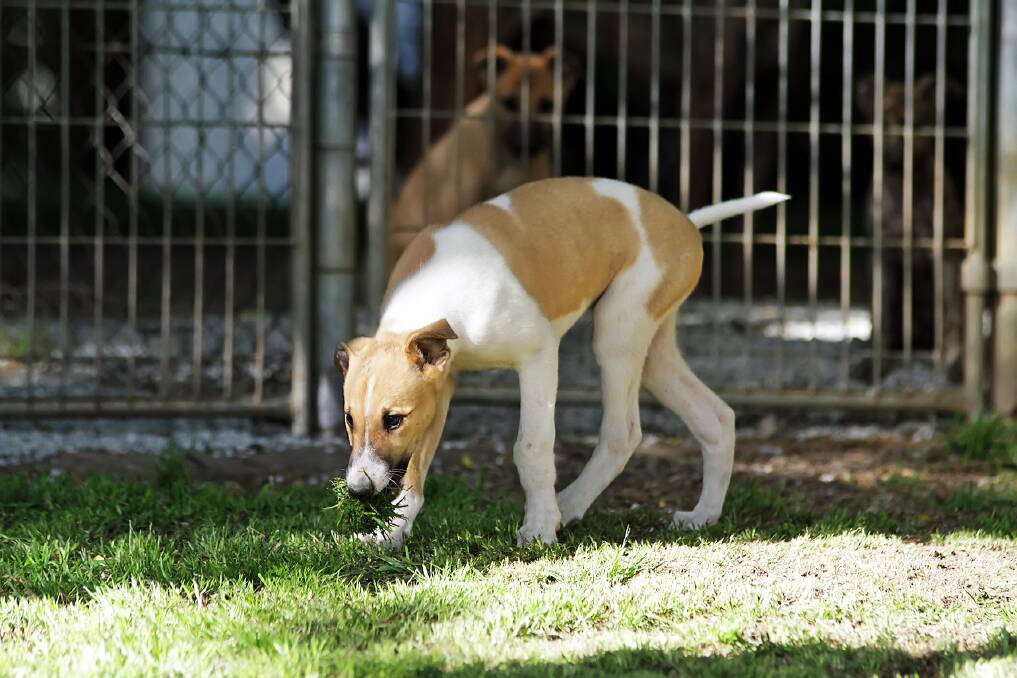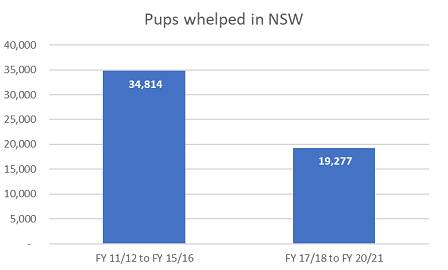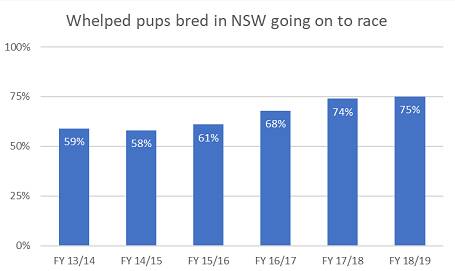
Greyhound breeding numbers in NSW have decreased by more than 15,000 in the latest 10-year data figures that compare the latest five years versus the previous five years.
Create a free account to read this article
$0/
(min cost $0)
or signup to continue reading
The significant drop in greyhounds born in NSW over the past five years is captured in latest statistics that show 15,537 fewer dogs were born between 2016-17 and 2020-21 compared with the period between 2011-12 and 2015-16.
The news comes as most recent Greyhound Welfare and Integrity Commission (GWIC) figures show that more dogs born in NSW are going on to racing careers than ever before, with the "utilisation rate" at an all-time high of 75.4 percent from the most recent 2018-19 season - up from 58 percent in 2014-15.

Tony Mestrov, who started as Chief Executive Officer of Greyhound Racing NSW (GRNSW) in 2017, said it was "obvious that 2015-16 was a line in the sand moment for the industry".
"I'm very pleased with the progress that has been made and the responsible and sustainable nature of the whole-of-industry approach that has led to these outcomes," he said.
"The industry has been on a path of transformation since 2015-16 and the progress is being widely seen and recognised, even if it isn't being acknowledged by some minority groups."
Mr Mestrov said that GRNSW's focus on animal welfare had also been highlighted with a record 1880 greyhounds re-homed in 2020-21 and the plans for the world's first farm-stay to rehabilitate and retire greyhounds being developed in the Hunter Valley.
"Re-homing records, sustainable breeding numbers, all-time low rates of the most serious on-track injuries over the past two years and a significant increase of pups born making it to racing are very positive outcomes," he said.

"This has allowed the industry's stakeholders to continue the path forward with confidence, but not for a minute do we think the job is done. We are working harder than ever."
Mr Mestrov said GRNSW had this year released its 2022-24 Strategic Plan built on pillars of Care, Community, Growth and Engagement.
"There's even greater investment in welfare initiatives coming, including a Greyhound Care Scheme that is intended to accelerate our target of zero unnecessary euthanasia and further substantially reduce the most serious of on-track injuries," he said.
The progress on key welfare measures has also led to greater confidence amongst the punters, with wagering on NSW greyhound events surpassing $2 billion for the first time in the 2020-21 Financial Year.
"GRNSW's income from wagering-related activities is helping us invest heavily in welfare initiatives while also delivering record returns to our participants through prizemoney and travel subsidies," Mr Mestrov said.
In the past four years GRNSW has paid participants a combined $126.5 million, which is up more than $30 million on the previous four-year total, and already it has been announced that participants will receive another significant increase in 2021-22 with $47 million paid back to owners and trainers, up 23 percent on the past year.
During 2020-21, $9.1 million (up $6 million) was also invested in tracks and infrastructure.
This article was produced as part of an ACM partnership with Greyhound Racing NSW.
ALSO IN THE NEWS:

